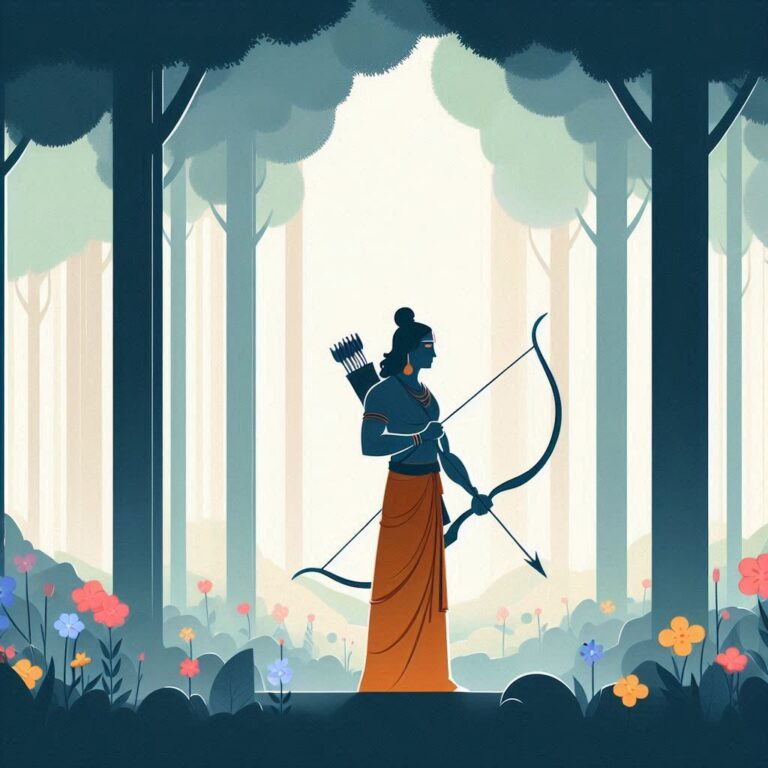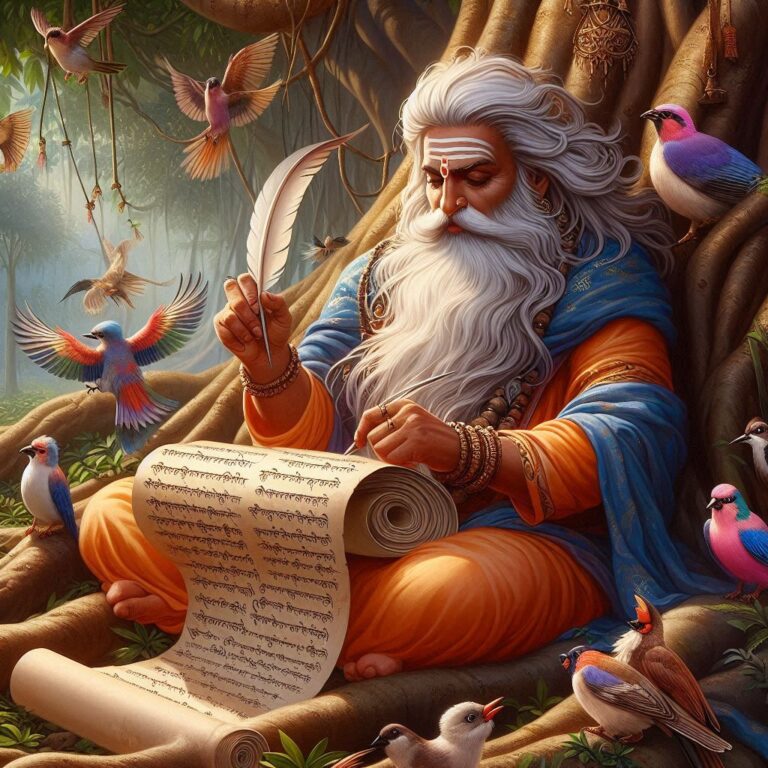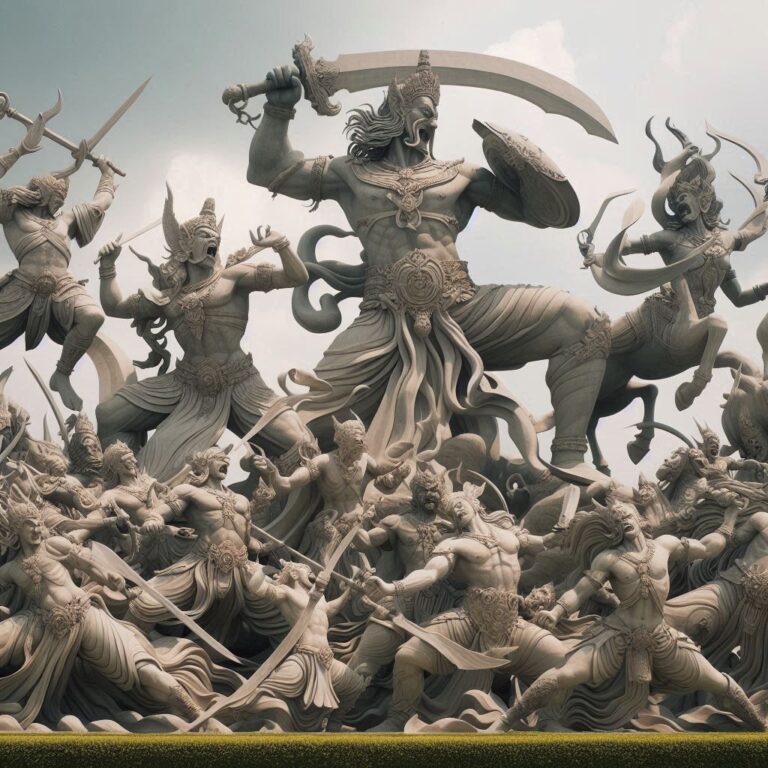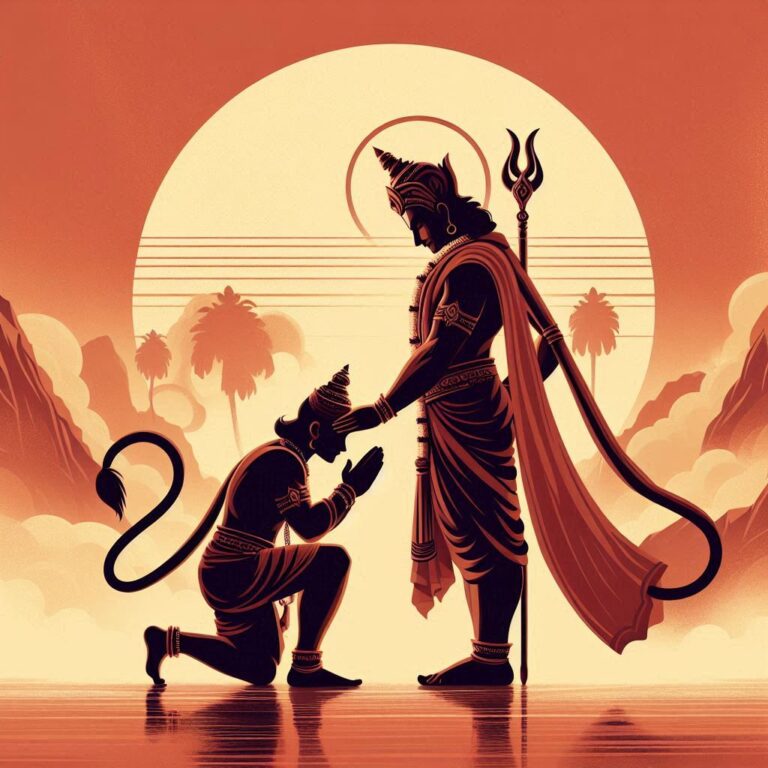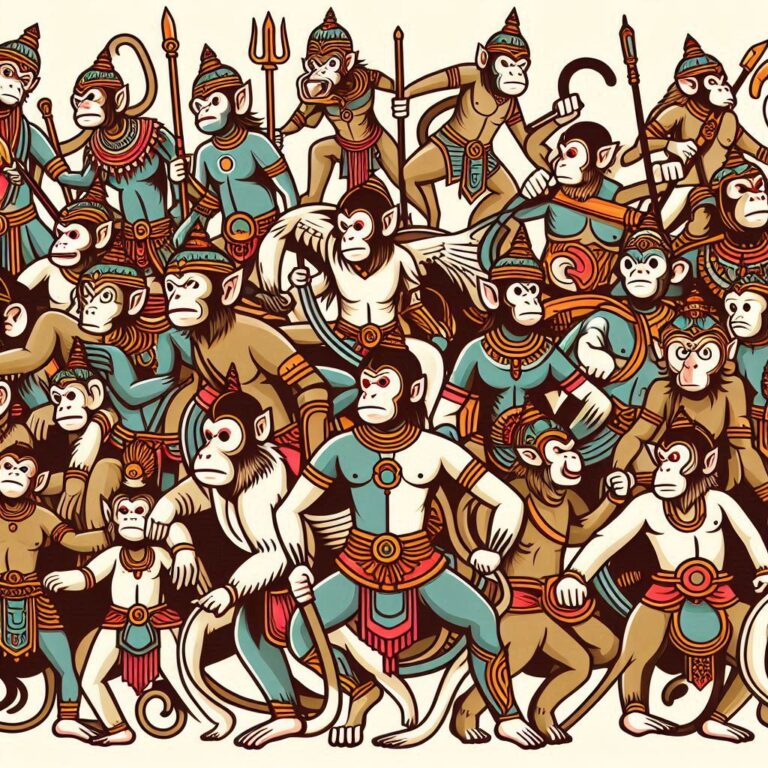Introduction to the Ramayan
The Ramayan, often referred to as the Adikavya (the first epic), is not just an ancient story but a timeless narrative that has shaped the spiritual, cultural, and ethical framework of India and beyond. This epic, composed by the sage Maharishi Valmiki, is a tale that transcends the boundaries of time and space, offering profound insights into the human condition, morality, and the eternal struggle between good and evil.
The Ramayan: A Timeless Epic
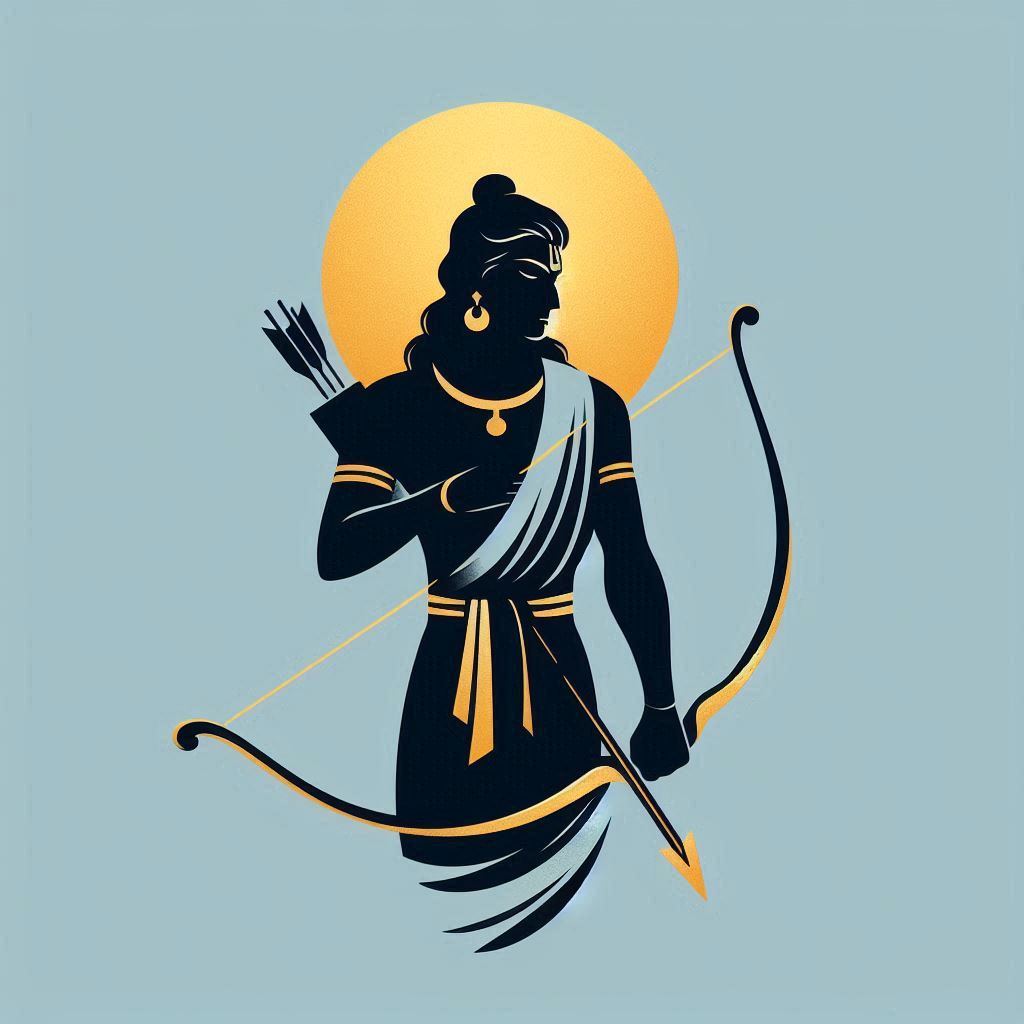
Origin and Composition
The Ramayan, believed to have been composed around the 5th to 4th century BCE, is one of the oldest and most revered texts in Indian literature. It is composed of nearly 24,000 verses, divided into seven books known as Kandas. Each Kanda narrates different phases of Lord Ram’s life, from his birth to his ascension as the king of Ayodhya.
Author – Maharishi Valmiki
Maharishi Valmiki, often referred to as the Adi Kavi or the first poet, is credited with the composition of the Ramayan. It is said that Valmiki was inspired by the story of Lord Ram and composed this epic to extol the virtues of righteousness (Dharma) and the ideal way of life. The transformation of Valmiki from a bandit to a sage is a story in itself, symbolizing the power of penance and devotion.
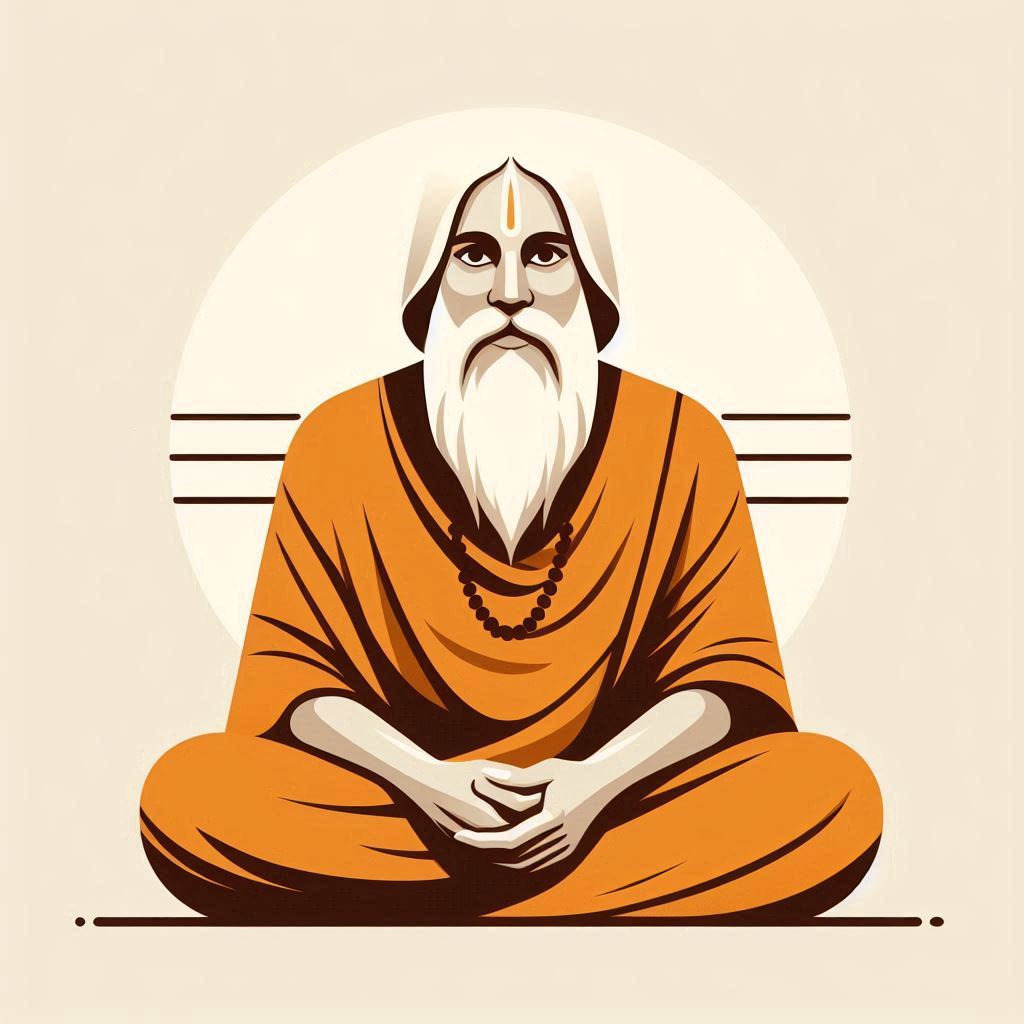
Cultural and Spiritual Significance
Influence on Indian Literature and Culture
The Ramayan has left an indelible mark on Indian literature, art, and culture. It is not merely a story but a guide to living a life of virtue and integrity. The values embodied in the characters of the Ramayan continue to inspire millions across the world. The epic has also influenced countless literary works, dramas, and artistic representations, making it a cornerstone of Indian cultural heritage.
Ramayan in Different Languages and Versions
The Ramayan has been translated and retold in various languages across India and Southeast Asia. Each version, while retaining the essence of the original, brings its own unique flavor and cultural nuances. For instance, the Tamil version known as Kamba Ramayanam and the Bengali version Krittivasi Ramayan are revered in their respective regions. The influence of the Ramayan extends even beyond India, with versions like the Ramayana Kakawin in Indonesia and the Reamker in Cambodia.
Major Themes in the Ramayan
Dharma (Righteousness)
One of the central themes of the Ramayan is Dharma or righteousness. The epic illustrates the importance of adhering to one’s duties and responsibilities, even in the face of adversity. Lord Ram is often hailed as Maryada Purushottam, the perfect man, who upholds Dharma at every step of his life.
The Concept of Ideal Relationships
The Ramayan beautifully portrays the ideal relationships one should aspire to in life. Whether it’s the unwavering loyalty of Hanuman to Lord Ram, the devotion of Sita to her husband, or the brotherly love between Ram and Lakshman, each relationship is a lesson in love, sacrifice, and commitment.
Sloka:
सीता राम गुणग्राम पुण्ये भगवती।
सीता मनोहर राम दास आपार।
Sītā rāma guṇagrāma puṇye bhagavatī।
Sītā manohara rāma dāsa āpāra।
Translation: Sita, the goddess, filled with the virtues of Ram, is revered by all. Ram’s servant Hanuman, with boundless devotion, is her delight.
The Battle Between Good and Evil
The eternal struggle between good and evil is another predominant theme in the Ramayan. The battle between Lord Ram and the demon king Ravan symbolizes the triumph of good over evil, a theme that resonates deeply with readers and devotees alike.
Divine Interventions and Miracles
The Ramayan is replete with instances of divine interventions and miracles, reflecting the belief in divine providence and the presence of a higher power guiding the course of events. These elements add a layer of mysticism and reverence to the narrative, making it not just a historical account but a spiritual journey as well.
The Storyline of the Ramayan
The Ayodhya Kanda (Book of Ayodhya)
The Ramayan begins with the birth of Lord Ram, the prince of Ayodhya, and his early life in the royal palace. This Kanda also details his marriage to Sita, the daughter of King Janaka. However, the story takes a dramatic turn when Ram is exiled to the forest for fourteen years due to the machinations of his stepmother, Kaikeyi.
Doha:
चौदह वर्ष चले बनवासी, अयोध्या छोड़ी सिया संग जाई।
न जाने राम बनवास की लीला, सब मिलि कियो सीता समर्पाई।
Translation: Ram, along with Sita, left Ayodhya for fourteen years of exile. Little did anyone know, it was Ram’s divine play to teach the world about sacrifice and duty.
The Aranya Kanda (Book of the Forest)
The Aranya Kanda describes Ram’s life in exile along with Sita and Lakshman. This book also narrates the pivotal event of Sita’s abduction by Ravan, the demon king of Lanka, which sets the stage for the ensuing battle between Ram and Ravan.
The Kishkindha Kanda (Book of Kishkindha)
In the Kishkindha Kanda, Ram forms an alliance with the monkey king Sugriva and his devoted follower Hanuman. This alliance is crucial in Ram’s quest to find Sita and ultimately leads to the invasion of Lanka.
The Sundara Kanda (Book of Beauty)
The Sundara Kanda is often considered the heart of the Ramayan. It focuses on Hanuman’s heroic journey to Lanka, his discovery of Sita in captivity, and his burning of Ravan’s city as a warning. This Kanda highlights Hanuman’s unparalleled devotion and strength.
Sloka:
हनुमान की करुणा निधि, लंका को जलाई।
राम नाम की महिमा में, सिया को छुड़ाई।
Translation: Hanuman, the ocean of compassion, burned Lanka. Through the glory of Ram’s name, he rescued Sita.
The Yuddha Kanda (Book of War)
The Yuddha Kanda narrates the climactic battle between Ram and Ravan, the destruction of evil, and the eventual victory of good. This Kanda ends with Ram’s triumphant return to Ayodhya, where he is crowned king.
Significant Characters in the Ramayan
Lord Ram – The Embodiment of Virtue
Lord Ram is the central figure of the Ramayan and is revered as the epitome of virtue, righteousness, and moral integrity. His life serves as a guide for individuals to live a life of Dharma.
Sita – The Epitome of Purity
Sita, the wife of Ram, is celebrated for her purity, devotion, and unwavering faith. She is often regarded as the ideal woman, embodying the virtues of patience, sacrifice, and chastity.
Hanuman – The Devoted Servant
Hanuman, the monkey god, is one of the most beloved characters in the Ramayan. His unwavering devotion to Ram and his extraordinary feats make him a symbol of strength, loyalty, and selfless service.
Ravan – The Complex Antagonist
Ravan, the demon king of Lanka, is the primary antagonist of the Ramayan. Despite his villainous role, he is portrayed as a complex character with immense knowledge, power, and a deep sense of pride, which ultimately leads to his downfall.
Lakshman – The Loyal Brother
Lakshman, the younger brother of Ram, is known for his loyalty and dedication to his elder brother. His sacrifices and unwavering support make him an exemplary figure of brotherly love.
Bharat – The Ideal Brother
Bharat, another brother of Ram, is a paragon of virtue and selflessness. Despite being offered the throne, he refuses to rule in Ram’s place, instead serving as a caretaker until Ram’s return.
Vishwamitra – The Guiding Sage
Vishwamitra, the sage who guides Ram in his early years, plays a crucial role in shaping Ram’s character and destiny. His teachings and blessings are instrumental in Ram’s journey.
Moral and Ethical Teachings of the Ramayan
Lessons on Dharma
The Ramayan is a treasure trove of lessons on Dharma, illustrating the importance of righteousness, duty, and moral integrity in every aspect of life.
The Importance of Family and Relationships
The epic emphasizes the significance of family ties and the responsibilities that come with them. The relationships between the characters of the Ramayan serve as models for ideal behavior within a family.
The Victory of Good over Evil
The ultimate message of the Ramayan is the triumph of good over evil. It reinforces the belief that righteousness, no matter how difficult the path, will ultimately prevail.
The Role of Divine Providence
The Ramayan underscores the role of divine providence in human life, reminding us that a higher power is always guiding and protecting those who adhere to Dharma.
Ramayan’s Influence on Indian Art and Culture
Ramayan in Classical Dance and Music
The Ramayan has been a significant source of inspiration for classical dance forms like Bharatanatyam, Kathak, and Odissi, as well as classical music compositions that narrate the tales of Ram’s life.
Depictions in Indian Art and Architecture
The epic has been immortalized in Indian art and architecture, from the intricate carvings on temple walls to the vibrant paintings and sculptures that depict scenes from the Ramayan.
Modern Interpretations in Media and Literature
The Ramayan continues to inspire modern interpretations in various media, including television series, movies, and literature, ensuring that the epic remains relevant to contemporary audiences.
Conclusion
The Timeless Relevance of the Ramayan
The Ramayan is not just an ancient epic; it is a living tradition that continues to guide and inspire people across the world. Its teachings on Dharma, virtue, and the eternal battle between good and evil are as relevant today as they were thousands of years ago.
Ramayan as a Guide for Ethical Living
In a world that is constantly changing, the Ramayan serves as a beacon of ethical living. It offers timeless wisdom and moral guidance that can help individuals navigate the complexities of life with integrity and righteousness.
FAQs
What is the Ramayan?
The Ramayan is an ancient Indian epic composed by Maharishi Valmiki. It narrates the life and adventures of Lord Ram, his wife Sita, and his battle against the demon king Ravan.
Who wrote the Ramayan?
The Ramayan was written by Maharishi Valmiki, a revered sage and poet, who is also known as the Adi Kavi or the first poet.
Why is the Ramayan important?
The Ramayan is important because it teaches valuable lessons on Dharma, virtue, and the importance of family and relationships. It also symbolizes the triumph of good over evil.
What are the main themes of the Ramayan?
The main themes of the Ramayan include Dharma (righteousness), the ideal relationships, the battle between good and evil, and the role of divine providence.
How does the Ramayan influence modern Indian culture?
The Ramayan has a profound influence on modern Indian culture, from classical dance and music to art, architecture, and literature. It continues to inspire new interpretations in various media, keeping its teachings alive in contemporary society.

